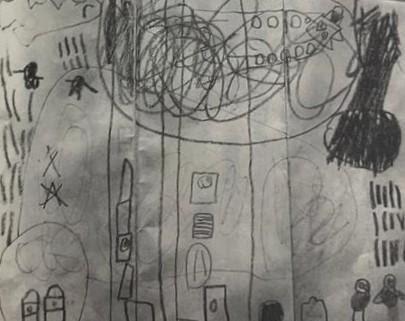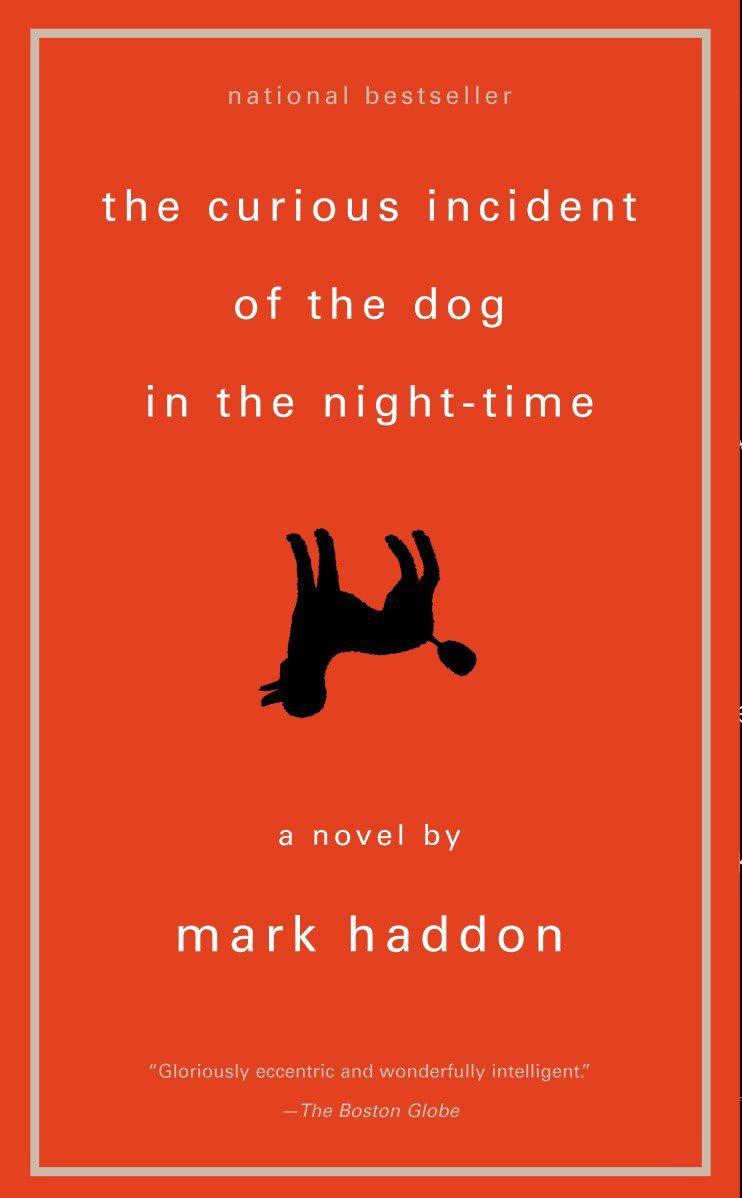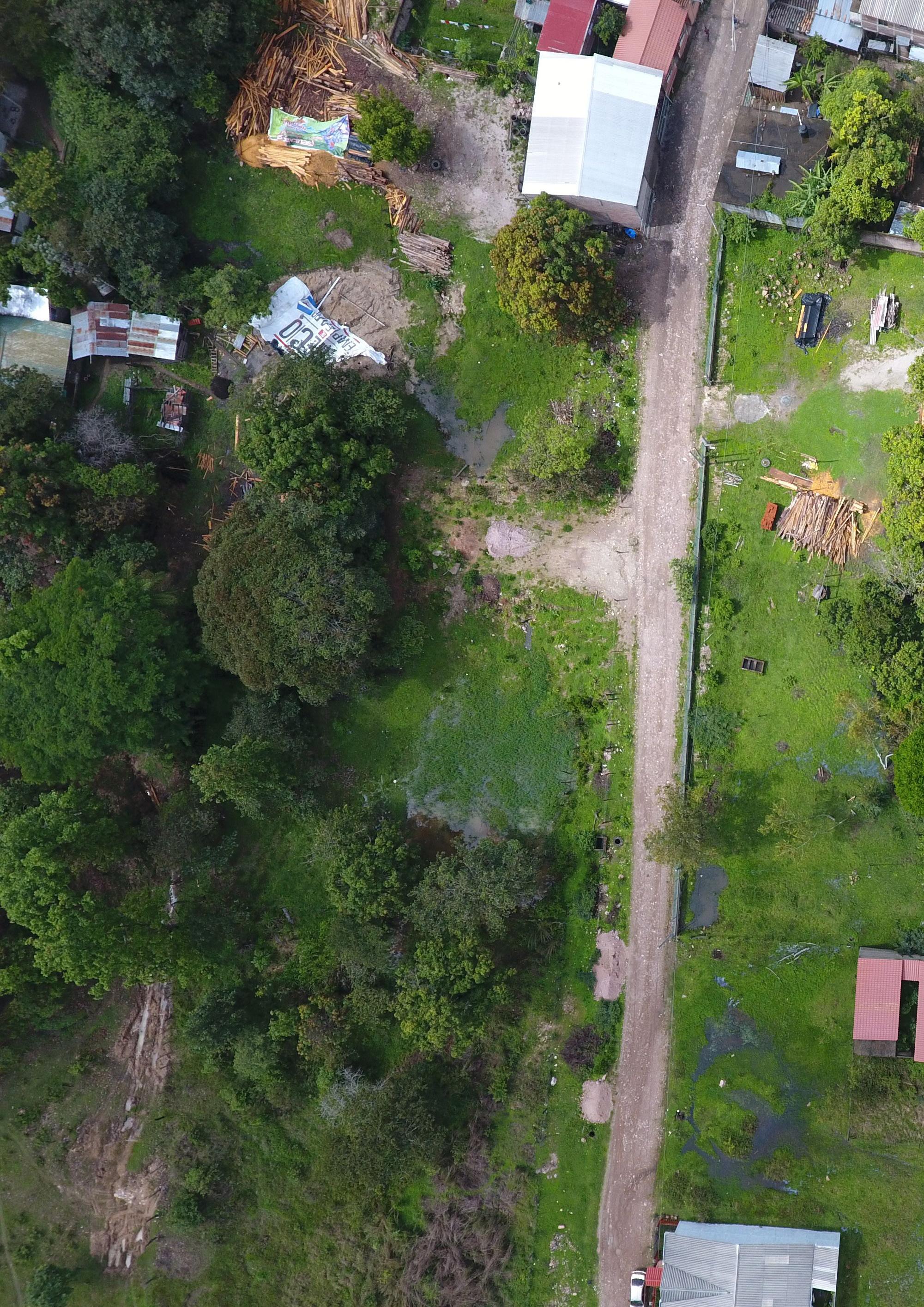
7 minute read
Book Sharing
《心靈的傷,身體會記住》 The Body Keeps The Score
Karlie Chen
Advertisement
I was so attracted by this book name “The Body Keeps The Score” when I first saw it in my school library. This book is mainly about traumatic stress. The body is triggered to even a situation which is just slightly similar to what had caused the trauma. It results in sequelae such as insomnia, drug and alcohol addiction and self-destructive behavior.
With Dr. Bessel van der Kolk’s profound medical knowledge, he reveals trauma via a number of interesting experiments and explains from the changes of brain substances.
After many years of his clinical practices, he has also brought forth a controversial discussion about the medicine usage of psychiatric patients. Currently there are about 500,000 children in the USA taking psychiatric medication; however this hinders their motivation, recreation ability and curiosity, which are crucial as a contributing member of a society. These chemicals may be able to suppress symptoms but not curing from deep within. It means their right of thorough recovery is also deprived.

Dr. Bessel van der Kolk mentions some alternatives which bring hope to the entire psychiatry. Using imagination revisiting traumatic scenes and re-creating them to a much desirable outcome exert a tremendous effect on a patient. Patients are relieved from the feeling of incapability of the time of harm. Drama therapy is another option. Through drama some often suppressed feelings are able to be expressed. Patients take up roles which are brave and full of faith which also motivates them to face their actual situation.
Although this book mainly talks about post-traumatic stress, there are lots of practical ways, like group support and care, that could be applied to emotions of all degrees.
Review in traditional Chinese:
近幾年無論在教會、工作地方、朋友同儕之間都 發現不少在人生某個階段遇到某些心靈傷害,而 此後的生活就一直被影響,困在自己熟悉的恐懼 中,就像書中所形容「卡」住了一樣。
我有一次在學校圖書館看了這本書,就被它的書 名吸引了﹕《心靈的傷,身體會記住》。這本書 主要是探討創傷後壓力症 Post Traumatic Stress Disorder 。很多身心受傷的經歷,就算事情過了 多麼久,以為會慢慢的淡忘,身體卻誠實的反映 著那影響還沒有過去,嚴重的例如失眠、藥物上 癮、酗酒、自殘。
這些狀況都清楚地說明人類大腦的結構與運作系 統,以及當傷痛發生時,大腦某些區域的變化應 對,讓人驚嘆創傷與身體的連鎖反應,就例如皮 質醇(一種壓力賀爾蒙),皮質醇會釋放安全信號 來結束身體的壓力反應,但創傷後壓力症者體內 的壓力賀爾蒙卻並不會在威脅消失後回復到原本 的基準值,以致患者長期在驚恐之下,一遇到相 似的場景就有「戰、逃、僵呆」的反應,而引致 各種身體的反應。
作者具豐富的專業知識,由淺入深剖析創傷後壓 力症。書中提到一些實驗讓人更容易理解,其 中提及一個動物研究﹕當研究者播放很吵的噪音 時,在溫暖又食物充足的環境中長大的小鼠會立 刻逃回巢穴,另一群在吵雜且缺乏食物的巢穴中 長大的小鼠,即使已經身處在比較愉快的環境, 也願意逗留一會兒,但最後還是會跑回自己的巢 穴。不論家的環境舒適還是惡劣,受到驚嚇的動 物都會跑回家。人似乎也是一樣。病患就算是在 家中受虐,即使有機會再度受傷,是否也是身不 由己地回到熟悉的地方?
作者亦透過分享這幾十年在精神醫學的經歷,坦 誠地探討精神科藥物的利與弊。成效快而明顯 的背後又有否真正帶病人走出陰霾? 還是只是 抑制情緒,結果病人卻一輩子依賴著藥物?在美 國有五十萬兒童在服用抗精神病藥物,通常是為 了讓被虐待和被忽視的孩子比較好管教。然而這 樣也阻礙了他們的動機、遊戲能力和好奇心,這 些都是要成為一個在社會上健全又有貢獻的一員 所需的元素,同時服用這些藥物的兒童也有罹患 病態肥胖及糖尿病的風險。可是,由於藥物利潤 驚人,如執業醫師探究其他治療方法,通常會被 邊緣化為「非主流」。非藥物治療的研究也很少 得到經費。主流醫學堅決透過化學追求更好的生 活,卻沒有想過我們其實可以採取藥物以外的途 徑,改變人體的生理機能和內在平衡。當我們忽 視病患最核心的源頭而只是藉藥物抑制表面的症 狀,我們就奪走了人類癒合創傷、恢復自主的能 力。其實香港也是一個重用精神科藥物的地方, 看過作者不偏不倚的分析後,實在也為目前香港 的治療手法感到失望。雖然藥物的確能有效地抑 制精神病病患的病癥而減低對社會的危險,只是 一直的抑制,但卻奪去了他們痊癒的權利。
最後作者提出了一些仍在試行的治療方法,新穎 且滿有盼望。例如想像力對於療癒有意想不到的 效果,作者記下了一個親身見證的經歷︰他朋友 的兒子在目睹九一一恐怖襲擊後當晚畫了一幅圖 畫。他畫下了當時慘痛可怕的一幕,就是人們從 熊熊烈焰的大樓往下跳,但他還多畫了救生設 備,在即將崩塌的建築物底部加了一個彈簧墊。 他運用了想像力來處理看到的景象。那一夜小孩 子安然進睡了。
有時我也會在想,如果生活太艱苦,想像力不是 給人快樂和生存下去的動力嗎? 作者分享他如何 把想像力帶進治療的領域裡,帶患者重訪過去並 賦予慘痛經歷一個新的結局。作者提及其中一個 重訪過去的方法,有點像現時輔導學裡所用的空 椅子技巧:讓受創者回到生命中一些關鍵時刻, 把當時沒有說到的話說出來,把沒有做的事完 成。讓人去創造新的、補充性的記憶。這樣做並 沒有抹除負面記憶,但卻賦予人力量,提供了一 個新的選項,從受傷害時那種無助感出來,重寫
自己的人生劇本,滿足基本的人性需求,實現被 愛和被保護的渴望。
又例如其中的劇場治療實在令人眼前一亮。從前 我一直思索戲劇的意義。除了娛樂觀眾,戲劇甚 至能助演出者在團體裡自由的體驗深刻的情緒。 愛與恨、攻擊與屈從、忠誠與背叛,這些都是劇 場的要素,也是創傷的元素。可惜的是,文化對 我們的訓練是跟自己真實的感受切割,而戲劇卻 帶人深切去感受,甚至傳達給觀眾。書裡作者 也有提及自己的兒子在患重病時如何透過在戲劇 裡擔任重要的角色重拾信心,勇敢面對疾病與治 療。
雖然這本書主要是談及創傷後遺症,不過很多裡 面所探討或可實行的方法卻能用於不同程度的情 緒問題。就像關心與群體的支持,或一些身體接 觸以安撫對方情緒,都能用於身邊的人。
我很久也沒有完成過一本有點厚的書,但內容實 在引人入勝。我非常推薦大家看看這本書,特別 是對精緒健康有興趣的人。
Review in simplified Chinese:
近几年无论在教会、工作地方、朋友同侪之间都 发现不少在人生某个阶段遇到某些心灵伤害,而 此后的生活就一直被影响,困在自己熟悉的恐惧 中,就像书中所形容「卡」住了一样。
我有一次在学校图书馆看了这本书,就被它的书 名吸引了﹕《心灵的伤,身体会记住》。这本书 主要是探讨创伤后压力症 Post Traumatic Stress Disorder 。 很多身心受伤的经历,就算事情过了 多么久,以为会慢慢的淡忘,身体却诚实的反映 着那影响还没有过去,严重的例如失眠、药物上 瘾、酗酒、自残。
这些状况都清楚地说明人类大脑的结构与运作系 统,以及当伤痛发生时,大脑某些区域的变化应 对,让人惊叹创伤与身体的连锁反应,就例如皮 质醇(一种压力贺尔蒙) ,皮质醇会释放安全信 号来结束身体的压力反应,但创伤后压力症者体 内的压力贺尔蒙却并不会在威胁消失后回复到原 本的基准值,以致患者长期在惊恐之下,一遇到 相似的场景就有「战、逃、僵呆」的反应,而引 致各种身体的反应。
作者具丰富的专业知识,由浅入深剖析创伤後 压力症。书中提到一些实验让人更容易理解,其 中提及一个动物研究﹕当研究者播放很吵的噪音 时,在温暖又食物充足的环境中长大的小鼠会立 刻逃回巢穴,另一群在吵杂且缺乏食物的巢穴中 长大的小鼠,即使已经身处在比较愉快的环境, 也愿意逗留一会儿,但最後还是会跑回自己的巢 穴。不论家的环境舒适还是恶劣,受到惊吓的动 物都会跑回家。人似乎也是一样。病患就算是在 家中受虐,即使有机会再度受伤,是否也是身不 由己地回到熟悉的地方?
作者亦透过分享这几十年在精神医学的经历,坦 诚地探讨精神科药物的利与弊。成效快而明显 的背後又有否真正带病人走出阴霾? 还是只是 抑制情绪,结果病人却一辈子依赖著药物?在美 国有五十万儿童在服用抗精神病药物,通常是为 了让被虐待和被忽视的孩子比较好管教。然而这 样也阻碍了他们的动机、遊戏能力和好奇心,这 些都是要成为一个在社会上健全又有贡献的一员 所需的元素,同时服用这些药物的儿童也有罹患 病态肥胖及糖尿病的风险。可是,由於药物利润 惊人,如执业医师探究其他治疗方法,通常会被 边缘化为「非主流」。非药物治疗的研究也很少 得到经费。主流医学坚决透过化学追求更好的生
活,却没有想过我们其实可以采取药物以外的途 径,改变人体的生理机能和内在平衡。当我们忽 视病患最核心的源头而只是藉药物抑制表面的症 状,我们就夺走了人类癒合创伤、恢复自主的能 力。其实香港也是一个重用精神科药物的地方, 看过作者不偏不倚的分析後,实在也为目前香港 的治疗手法感到失望。虽然药物的确能有效地抑 制精神病病患的病癥而减低对社会的危险,只是 一直的抑制,但却夺去了他们痊癒的权利。
最後作者提出了一些仍在试行的治疗方法,新颖 且满有盼望。例如想像力对於疗癒有意想不到的 效果,作者记下了一个亲身见證的经历︰他朋友 的儿子在目睹九一一恐怖袭击後当晚画了一幅图 画。他画下了当时惨痛可怕的一幕,就是人们从 熊熊烈焰的大楼往下跳,但他还多画了救生设 备,在即将崩塌的建築物底部加了一个弹簧垫。 他运用了想像力来处理看到的景象。那一夜小孩 子安然进睡了。
有时我也会在想,如果生活太艰苦,想像力不是 给人快乐和生存下去的动力吗? 作者分享他如何 把想像力带进治疗的领域里,带患者重访过去并 赋予惨痛经历一个新的结局。作者提及其中一个 重访过去的方法,有点像现时辅导学里所用的空 椅子技巧:让受创者回到生命中一些关键时刻, 把当时没有说到的话说出来,把没有做的事完 成。让人去创造新的、补充性的记忆。这样做并 没有抹除负面记忆,但却赋予人力量,提供了一 个新的选项,从受伤害时那种无助感出来,重写 自己的人生剧本,满足基本的人性需求,实现被 爱和被保护的渴望。
又例如其中的剧场治疗实在令人眼前一亮。从前 我一直思索戏剧的意义。除了娱乐观众,戏剧甚 至能助演出者在团体里自由的体验深刻的情绪。 爱与恨、攻击与屈从、忠诚与背叛,这些都是剧 场的要素,也是创伤的元素。可惜的是,文化对 我们的训练是跟自己真实的感受切割,而戏剧 却带人深切去感受,甚至传达给观众。书里作者 也有提及自己的儿子在患重病时如何透过在戏剧 里担任重要的角色重拾信心,勇敢面对疾病与治 疗。
虽然这本书主要是谈及创伤後遗症,不过很多里 面所探讨或可实行的方法却能用於不同程度的情 绪问题。就像关心与群体的支持,或一些身体接 触以安抚对方情绪,都能用於身边的人。
我很久也没有完成过一本有点厚的书,但内容实 在引人入胜。我非常推荐大家看看这本书,特别 是对精绪健康有兴趣的人。
The Diving Bell and the Butterfly (original French title Le Scaphandre et le Papillon)
Nikita Hayward
The Diving Bell and the Butterfly is one of the most compelling books ever written about communication. The book explores what happens when someone’s ability to communicate is suddenly taken away, and the resulting isolation – a poignant metaphor for what the world has had to come to terms with due to the COVID-19 pandemic.
This book has had a profound impact on the way that I think about human communication and made me more interested in the fields of psychology and speech and language therapy. The author, Jean-Dominique Bauby, was a famous writer and editor of ELLE, a prestigious French fashion magazine. Although affluent, an unfortunate stroke left him completely paralysed and unable to speak.
Even after the stroke, Bauby could still understand those around him and remember the past, but it took a very long period of time until people realised that he could still comprehend them by blinking his eyelids to signify this and even respond.
How did Bauby move on from what had happened to him without being able to physically move? How did he come to terms with his altered reality, where his body was no longer subservient to his mind? This is a book about loneliness, isolation, and the integral role of communication in survival. Above all, this is a book about hope.
Bauby eventually learnt to discover his own “new normal” (which might very well become one of the most popular phrases of 2020!). He learnt that communication came from empathy and patience, not physical sound or proximity. When Bauby had to learn to blink as his primary means of communication, he even described himself as feeling “like a caveman discovering language for the first time”. In their own way, I imagine most people have reached a similar conclusion while living under varying forms of lockdown this past year.


At one point, Bauby drew a parallel between him feeling trapped in his own body and his elderly father who lived alone. Bauby saw himself as one of many “castaways on the shores of loneliness.” However, the irony here is that he knows his feeling of loneliness is not unique to him. The word “castaway” here is particularly telling - it implies someone lost, adrift from a shipwreck, or equally, something that has been “castaway”, forgotten, and perhaps deliberately thrown aside, as Bauby is segregated from mainstream society.
Bauby eventually found solace in his imagination and memory and reimagined himself as the eponymous butterfly. In this way, he takes back control over his “diving bell” (his immobile body), which then “becomes less oppressive”. He transcends his individual struggle and meditates on the vastness of the universe. He believes that optimism is an imperative part of collective human survival and ponders; “does the cosmos contain keys for opening my diving bell? … A currency strong enough to buy my freedom back? We must keep hoping”.
Ultimately, if there is one lesson to be learned from The Diving Bell and the Butterfly, it is that communication is both the tool used to build communities, and the bridge which holds them together.

The Curious Incident Of The Dog In The Nighttime
Ken Fung
The Curious Incident Of The Dog In The Nighttime is a story of a boy named Christopher who has Asperger’s syndrome and is trying to solve the murder of his neighbour’s dog. During his investigation, he finds out a number of uncomfortable truths that lead him to lose all trust in his father who lies about his mother’s death and his killing of the dog. The story ends with his decision to reconcile with his father.
“And when I was asleep I had one of my favourite dreams… And in the dream nearly everyone on the earth is dead…”
This is a quote from Christopher. A quote that reveals his subtle disdain of people in the world. A quote that describes the social exclusion that an autistic child experiences every day. A quote that reminds us of how much misunderstanding we have about what seems ‘abnormal’ in our eyes but is normal in the autism spectrum. Sometimes it’s not the child’s problem. Sometimes, we are the problem.
Due to his Asperger’s syndrome, Christopher lives on rules, patterns, equations, and is incapable of normal social interaction. Even his everyday social skills have to be trained and taught by special educators. It is frustrating to see that people know very little about Asperger’s syndrome or autism, and because of such ignorance, they usually stare at, rudely speak to, or even viciously tease Christopher. Instead of trying to understand why he is behaving in certain ways, they discriminate against him. Are we one of these people? Do we understand what it means to have Asperger’s syndrome?
In the book, Christopher’s mother has an affair with a neighbour and chooses to leave her son for a new partner. Exasperated about this and convinced that it is best Christopher not know the divorce, the father chooses to deceive his son into believing that his mother dies of sickness. When she finds out that her ex-husband fabricates her death to completely isolate Christopher from herself, she realises she could no longer afford to be selfish or choose romance over her dear son.
What surprised me the most was how Christopher reacted to all of this. He emotionally breaks down and literally vomits at his father’s lie. Running away from his father, he travels miles to London in search of his mother. It broke my heart to see that Christopher was hurt so much while his parents understood so little about him.
I believe this story is a wake-up call for all of us. It is imperative we care about children - children who often get treated differently just because they do not talk like us or live like us. They have a different backstory, as much as we have our own backstories. Are we willing to listen to those backstories? Are we ready to listen? Let us hear before we judge.






